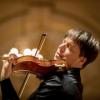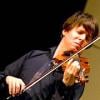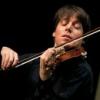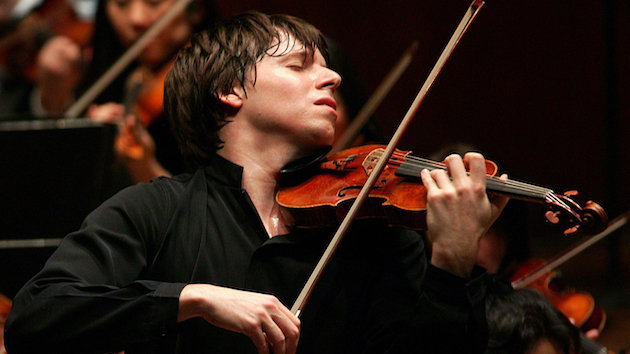
Joshua Bell famously busked under the radar in a Washington, D.C., metro station, unfazed as commuters bustled past during rush hour. I couldn’t help but think of this in a concert Sunday at Davies Symphony Hall — namely, the distinctly dauntless impression many of Bell’s performances capture. He causes many to suspect he could walk on coals or hang upside down and still unleash a flawless cadenza.
The effect is not so dissimilar when watching a great performance of the Paganini Violin Concerto No 1 in D Major. Composed by the legendary 19th-century virtuoso, it’s a work which invites descriptions like “mind-blowing,” “show-stopping,” and even “wizardry” and “fireworks.” Paganini, whose rock-star showmanship morphed into something of a superhuman mystique (with a fun sprinkle of the occult), drove audiences wild with his performances. Virtuosic techniques are opportunities to show off one’s skill. There are alpine-high notes, flashy bowing, and finger-gnarling passages. Big shifts must be tackled with an Olympic ice skater’s athleticism. In a live performance, there’s an element of not being able to believe one’s ears or eyes. As ClassicFM wrote of the first times it was performed: “So inhuman was Paganini’s playing, some even thought him to be the son of the devil.”
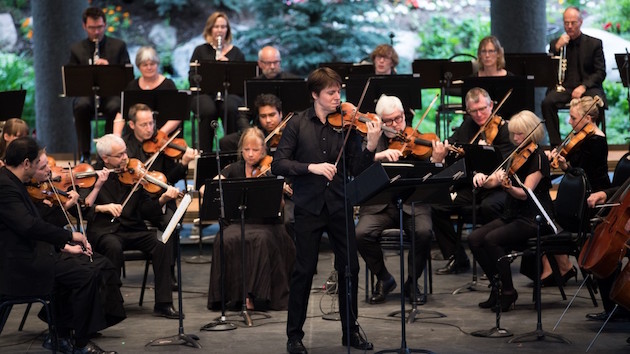
At Davies Hall Sunday night, the vibe was slightly different, in all the right ways. Soon after Bell took to the stage to perform the feat-filled concerto with the Academy of St Martin in the Fields, after Beethoven’s Corolian Overture, an awe blanketed the hall. The concerto has a pleasing orchestral introduction, which Bell conducted with his François Tourte bow in hand. What’s perhaps even more fun than seeing the Paganini concerto live — or Joshua Bell live, for that matter — is watching the audience. Bell sailed through double and triple stops at lightspeed, still shaping the theme with a dulcet elegance, nailing notes with a remarkable precision and clarity in intonation. Meanwhile, around the hall, I noticed many with their hands cradling their faces. Heads turned to the side, sinking into the music. I spotted a man in the center terrace leaning forward over a railing, stretching toward Bell with both hands. Even members of the orchestra seemed amused: Players smiled and nodded while Bell ripped through his own cadenza’s pyrotechnics. He exuded an uncanny effortlessness, rocking on springy knees.
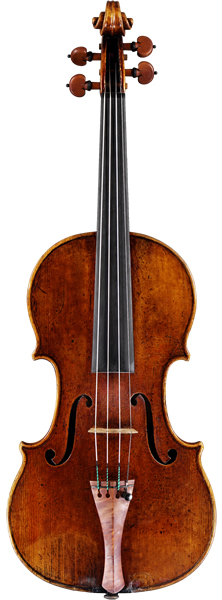
Bell’s tackling of the high notes at the summit of the fingerboard were bell clear. His 1713 Huberman Stradivarius gave off a star-bright tone high on the E string. After the first movement, audience members broke protocol, applauding vigorously. Meanwhile, Bell tended to a couple bow hairs that detached in the frenzy. He discarding them while playfully asking, “Anybody have a horse?”
This concerto is such a work of technical showmanship that many soloists know their true task is teasing out a deeper spectrum of emotional hues. The operatic slow movement found Bell shaping phrases with supple vibrato. Paganini’s melody is surprisingly cool compared with the heat he reportedly inspired in his fans. Perhaps because Bell’s command of the special effects was so watchable — and maybe because this is the era of TikTok — slower passages felt more like decorated exhales. They held space before more magic unfolded. When the Rondo (Allegro spiritoso) got underway, listeners seemed to perk up again. Bow control is as vital here as left-hand elasticity, and Bell fired off controlled ricochets. Whistle-high, double-stopped harmonics crisply sparkled without any of the streakiness that evokes dolphin calls.
One of the thrills of watching the celebrated ASMF is its hallmark lack of conductor. Although, with Music Director Bell commanding from the concertmaster’s chair, one could hardly label it leaderless. Still, it’s a fascinating example of the hive-mind telepathy of such a group. There was a delightful cohesion. The first opening bars of the Corolian Overture saw the strings capturing the same velvety warmth; there was personality in ASMF’s development of the two dramatically contrasting themes — standing in for Corolianus and his pleading wife and mother.
The program closed with Brahms’s Symphony No. 4 in E Minor, Op. 98. “If any composition by Brahms conveys a worldview, this is it,” reads program notes by Larry Rothe. The ASMF brought out all hues through deft playing and a moderate tempo. The horns shone here, their melody opening the Andante moderato before being picked up by the other winds against delicate pizzicatos. The brass delivered a bright sonority especially in the final movement, where the delicate solos from flute and oboe were enchanting.


